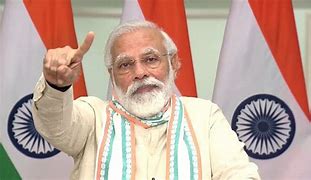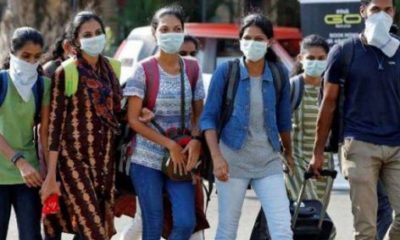Feature
False alarm of missile alert over Hawaii sparks panic in US

Washington: An incoming missile alert plunged residents of Hawaii in the US into panic before it was declared a false alarm.
Mobile phone users on Saturday received a message saying: “Ballistic missile threat inbound to Hawaii. Seek immediate shelter. This is not a drill.”
State Governor David Ige apologised and said it was caused by an employee pressing the wrong button, international English news channel reported.
The US government announced there would be a full investigation.
An alert system is in place because of the potential proximity of Hawaii to North Korean missiles.
In December, the state tested its nuclear warning siren for the first time since the end of the Cold War.
The false warning message was sent to people’s mobile devices, and was also broadcast on television and radio stations.
It was corrected by email but there was no follow-up mobile text for 38 minutes, the Honolulu Star-Advertiser reports.
Governor Ige said human error during one of the thrice-daily shift changes at the the state’s Emergency Management Agency (EMA) was to blame for the false alert.
False alarm of missile alert over Hawaii sparks panic in United States:
“It was a procedure that occurs at the change of shift where they go through to make sure that the system, that it’s working. And an employee pushed the wrong button,” he explained.
“It was an inadvertent mistake,” said EMA administrator Vern Miyagi. “The change of shift is about three people. That should have been caught… it should not have happened.”
Television and radio broadcasts across the state were interrupted with a recorded emergency message instructing people to stay indoors.
“If you are outdoors seek immediate shelter in a building. Remain indoors well away from windows. If you are driving pull safely to the side of the road and seek shelter in a building while laying on the floor. We’ll announce when the threat has ended. This is not a drill!”
People in the US state have been sharing stories of momentary frenzy and the panic-stricken messages they exchanged with loved ones after they received the alert.
Videos posted on social media appeared to show students at the University of Hawaii running for shelter after the missile threat was issued.
Matt Lopresti, a member of the Hawaiian House of Representatives, was at home when he received the alert on his mobile phone.
“We got our children, grabbed our emergency supplies, put them in our most enclosed room in our house which is our bathroom,” he told local broadcaster KGMB.
“There’s not much else you can do in that situation. You know, we did what we could… and I am very angry right now because it shouldn’t be this easy to make such a big mistake.”
Golfers competing at the US PGA Hawaii Open in Honolulu were also thrown into alarm, with US player Talor Gooch tweeting that “birdies didn’t seem too important for a few minutes”.
Entertainment
Meghalaya Reserves Legalized Gambling and Sports Betting for Tourists

The State Scores Extra High on Gaming-Friendly Industry Index
Meghalaya scored 92.85 out of 100 possible points in a Gaming Industry Index and proved to be India’s most gaming-friendly state following its recent profound legislation changes over the field allowing land-based and online gaming, including games of chance, under a licensing regime.
The index by the UK India Business Council (UKIBC) uses a scale of 0 to 100 to measure the level of legalisation on gambling and betting achieved by a state based on the scores over a set of seven different games – lottery, horse racing, betting on sports, poker, rummy, casino and fantasy sports
Starting from February last year, Meghalaya became the third state in India’s northeast to legalise gambling and betting after Sikkim and Nagaland. After consultations with the UKIBC, the state proceeded with the adoption of the Meghalaya Regulation of Gaming Act, 2021 and the nullification of the Meghalaya Prevention of Gambling Act, 1970. Subsequently in December, the Meghalaya Regulation of Gaming Rules, 2021 were notified and came into force.
All for the Tourists
The move to legalise and license various forms of offline and online betting and gambling in Meghalaya is aimed at boosting tourism and creating jobs, and altogether raising taxation revenues for the northeastern state. At the same time, the opportunities to bet and gamble legally will be reserved only for tourists and visitors.
“We came out with a Gaming Act and subsequently framed the Regulation of Gaming Rules, 2021. The government will accordingly issue licenses to operate games of skill and chance, both online and offline,” said James P. K. Sangma, Meghalaya State Law and Taxation Minister speaking in the capital city of Shillong. “But the legalized gambling and gaming will only be for tourists and not residents of Meghalaya,” he continued.
To be allowed to play, tourists and people visiting the state for work or business purposes will have to prove their non-resident status by presenting appropriate documents, in a process similar to a bank KYC (Know Your Customer) procedure.
Meghalaya Reaches Out to a Vast Market
With 140 millions of people in India estimated to bet regularly on sports, and a total of 370 million desi bettors around prominent sporting events, as per data from one of the latest reports by Esse N Videri, Meghalaya is set to reach out and take a piece of a vast market.
Estimates on the financial value of India’s sports betting market, combined across all types of offline channels and online sports and cricket predictions and betting platforms, speak about amounts between $130 and $150 billion (roughly between ₹9.7 and ₹11.5 lakh crore).
Andhra Pradesh, Telangana and Delhi are shown to deliver the highest number of bettors and Meghalaya can count on substantial tourists flow from their betting circles. The sports betting communities of Karnataka, Maharashtra, Uttar Pradesh and Haryana are also not to be underestimated.
Among the sports, cricket is most popular, registering 68 percent of the total bet count analyzed by Esse N Videri. Football takes second position with 11 percent of the bets, followed by betting on FIFA at 7 percent and on eCricket at 5 percent. The last position in the Top 5 of popular sports for betting in India is taken by tennis with 3 percent of the bet count.
Local Citizens will Still have Their Teer Betting
Meghalaya residents will still be permitted to participate in teer betting over arrow-shooting results. Teer is a traditional method of gambling, somewhat similar to a lottery draw, and held under the rules of the Meghalaya Regulation of the Game of Arrow Shooting and the Sale of Teer Tickets Act, 2018.
Teer includes bettors wagering on the number of arrows that reach the target which is placed about 50 meters away from a team of 20 archers positioned in a semicircle.
The archers shoot volleys of arrows at the target for ten minutes, and players place their bets choosing a number between 0 and 99 trying to guess the last two digits of the number of arrows that successfully pierce the target.
If, for example, the number of hits is 256, anyone who has bet on 56 wins an amount eight times bigger than their wager.





























